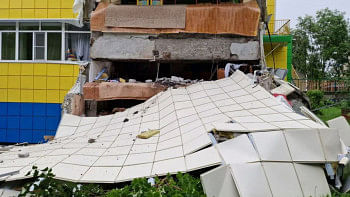Tackle root challenges
On April 24, 2013, the Rana Plaza garment factory complex collapsed, killing more than 1,100 workers. It was the biggest industrial accident in modern memory. Two years later, too little has been done to ensure worker safety. Despite the fact that a number of global brands and retailers have contributed to a $30 million fund to benefit the families of the victims, too many continue to suffer. And even though these global brands and retailers have conducted factory safety inspections in about 1800 factories and the government has inspected another 700, far too many people continue to work in unsafe conditions. As we mark the second anniversary of Rana Plaza, global brands, local manufacturers, and governments have a long road ahead to ensure worker safety.
It is clear that global apparel companies have seriously underestimated how many factories are producing their products. Over the last year, the NYU Stern Center for Business and Human Rights has analysed five public factory databases to better understand the true size of the industry. Our preliminary analysis found 7,100 unique factories and facilities across these databases, which suggests that the industry is much larger than current estimates, which top out at 6,000.
A report our Center published last year, "Business as Usual is Not an Option," explains why so many factories remain uncounted and uninspected. The prevailing model of garment production relies on a "hub and spoke" system. In this system, Western brands maintain direct commercial relationships with modern, more regulated hub factories, which then outsource production to spoke factories, often smaller and less mechanized. The hubs are subject to inspections and other forms of oversight by the government and the Western brands, while the spokes often are invisible to both brands and regulators.
Rana Plaza and other factory disasters in Bangladesh highlight the risks for workers in a system where a significant number of factories operate in the shadows. Yes, the government and brands should inspect their primary, hub suppliers. But acknowledging the role of spoke factories in the current model and developing a plan to conduct oversight of them is one of the major outstanding challenges as we mark the second anniversary of Rana Plaza.
As the international community aims for a safer and more sustainable supply chain in Bangladesh, we have three recommendations for action:
Establish a process to develop a roadmap for a sustainable sector. Bangladesh's manufacturing sector needs recommendations for truly practical actions that would result in better fire and building safety, more oversight and greater efficiency. In an op-ed in the Wall Street Journal last year, Rubana Huq, a leading manufacturer in Bangladesh, detailed the practical challenges factories face when it comes to financing, importing materials, transport, and meeting tight production deadlines, not to mention paying workers a decent wage. Add to this list lack of access to usable land for factory expansion, gas and electrical shortages, high interest rates, and reliance on a network of invisible subcontractors and the size of the challenge comes into focus. The key players in the industry should establish a forum or process in which to wrestle with these difficult questions and come up with a set of recommendations for ensuring factory safety. Detroit successfully employed such a process as it worked to combat blight and renew the city.
Put a price tag on the recommendations and develop a formula for shared responsibility for paying it. The roadmap should estimate the costs of its recommendations and identify a total price tag for a safe and more sustainable garment sector. It should propose a formula - based on export volumes and other factors - to share these costs among local manufacturers, international buyers, development agencies, philanthropic organizations, the government of Bangladesh, and governments from buying countries. A donor conference could be held to encourage diverse funders to commit at the same time to underwrite the significant costs of upgrading and overseeing the entire garment sector.
Develop metrics to allow consumers to reward brands with cleaner supply chains. It's hard to be a responsible consumer. Organizations like Consumers Union and the Fair Labor Association should begin developing indicators to help consumers make informed decisions about where to shop for clothes.
As Bangladesh's garment sector grapples with how it will protect the workers that make it the second largest exporter of clothing in the world, the best path forward involves systematically tackling the root causes of risks to human rights, developing a formula for truly shared responsibility, and empowering consumers.
The writer is the co-director of the Center for Business and Human Rights at the NYU Stern School of Business.

 For all latest news, follow The Daily Star's Google News channel.
For all latest news, follow The Daily Star's Google News channel. 



Comments